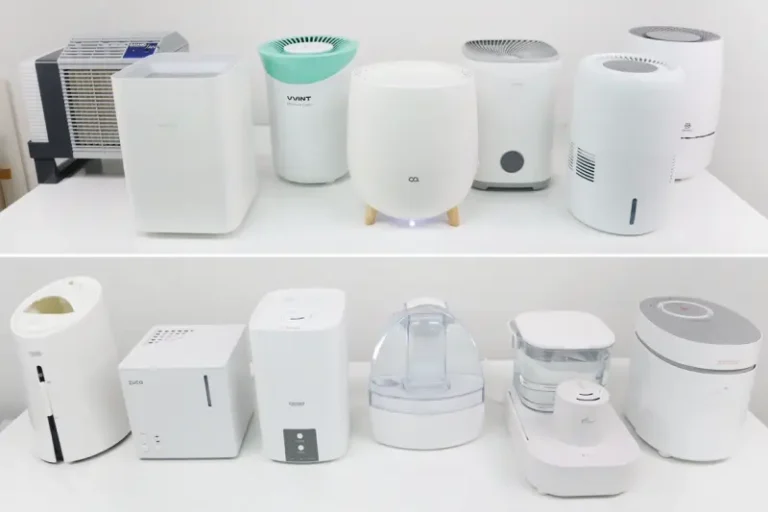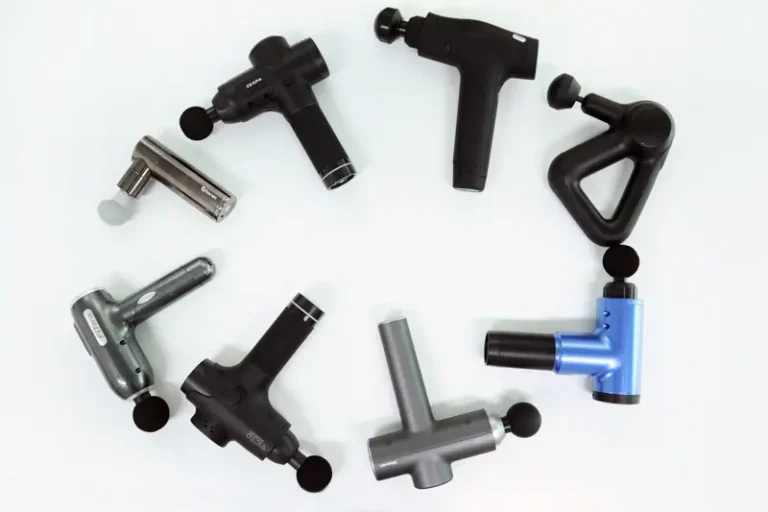The Best Floss Buying Guide

Finding the Perfect Dental Floss: Your Complete Buying Guide
While dentists recommend using dental floss at least once a day, finding the right product can be challenging. Unlike in many Western countries where floss usage is common, usage rates in America remain relatively low, with only about 30% of people regularly flossing.
Local stores and convenience shops typically offer limited options, and when shopping online, it can be difficult to determine which products are best. More importantly, dental floss needs to fit your personal preferences better than most products because reducing psychological barriers to regular use is crucial.
To help with these concerns, we’ve compiled a comprehensive guide covering different types of floss and important convenience features to consider. We hope this guide helps you find the perfect floss that becomes part of your daily routine, earning you praise at your next dental checkup.
Chapter 1.
Product Types
Dental floss comes in two main forms:
traditional string floss that you cut and use, and handled floss with string fixed to a handle.
Since these two types have distinctly different characteristics and pros/cons, this should be your primary consideration when choosing floss.
1. Traditional String Floss
Advantage 1: Fresh Section for Each Use

Traditional floss is used by cutting about 16 to 20 inches of string and wrapping the ends around your fingers. After using it between teeth once, you typically adjust the wrapped positions to use a fresh section for the next space between teeth.
This ability to use a clean, unused section for each dental space is the first major advantage of traditional floss.
Advantage 2: High Portability

Traditional floss comes in small cases, typically about 2 inches square, making it easy to carry in bags or pockets. This high portability means you can take it anywhere.
Advantage 3: Excellent Value

Excluding some premium products, most traditional floss costs less than $0.45 per 10 meters. Assuming daily usage of 20 inches, the annual cost is less than $7.50. Budget-friendly options cost around $0.15 per 10 meters.
These are particularly suitable if you prefer using longer lengths or floss multiple times per day.
Disadvantage 1: Gets Saliva on Hands

Excluding some premium products, most traditional floss costs less than $0.45 per 10 meters. Assuming daily usage of 20 inches, the annual cost is less than $7.50.
Budget-friendly options cost around $0.15 per 10 meters. These are particularly suitable if you prefer using longer lengths or floss multiple times per day.
Disadvantage 2: Takes Time to Master
For beginners, wrapping the floss around fingers and keeping it taut while inserting it between teeth can be challenging.
In fact, “how to use it” is the biggest hurdle for most people starting with floss. However, this isn’t about special techniques – it simply requires about a week of regular practice to become comfortable with your specific dental spacing.
2. Handled Floss
Advantage 1: Convenient Use

Handled floss, which features string attached to a handle, offers convenience as its biggest benefit.
Since you only need one hand to use it, you don’t have to open your mouth as wide, and less saliva gets on your hands. It’s similar to using a toothpick.
This makes it psychologically more approachable and reduces resistance to regular use. Considering that consistency is the most important factor in flossing, this ease of use is a significant advantage.
Advantage 2: Easy to Use

The main challenge for floss beginners is keeping the string taut while inserting it between teeth.
However, handled floss eliminates this need, making it easier for newcomers to clean between teeth. This convenience and ease of use is why most children’s dental floss products come in handled form.
Disadvantage 1: Repeated Use of Same Section
The convenience of attached string becomes a drawback as well. Since the string is fixed to the handle, you must reuse the same section unless you switch to a new piece. This means it may feel less fresh between teeth compared to traditional floss, and you may need to rinse it with water when removing substantial debris.
Disadvantage 2: Lower Cost-Effectiveness

Handled floss is less cost-effective compared to traditional floss. You typically use two pieces per session (one for upper teeth, one for lower), which means about 700 pieces per year with daily use.
With average prices ranging from $0.04 to $0.06 per piece, the annual cost is estimated at $30 to $45. Even with budget options costing less than $0.015 per piece, annual costs approach $7.50. This is 3 to 4 times more expensive than traditional floss.
Disadvantage 3: Plastic Waste
Beyond cost concerns, the disposable plastic handles pose an environmental issue, especially given growing concerns about plastic waste.
However, some products now address this by using biodegradable materials or recycled plastic. If you’re concerned about single-use plastic waste, consider these more environmentally friendly options.
Chapter 2.
Types
After choosing the form, the next consideration is the type of string.
There are three main types: standard string, spongy floss that expands with moisture, and smooth tape-style floss. Handled floss also comes in a double-line option.
1. Standard String Floss
Comfortable for Most Users

This is the thin string most people think of when they think of dental floss. It’s relatively inexpensive and generally acceptable to most users.
The thickness is typically 400 to 500 denier*, slightly thicker than sewing thread. It works well for most people unless they have extremely tight spaces between teeth.
*Denier is a unit measuring fiber density based on weight per unit length. One denier equals 9,000 meters per gram. For reference, human hair is typically about 20 denier thick.
Double-Line Option for Handled Floss

Some handled floss products feature two overlapping lines of standard floss, usually marketed as “Twin Line” or “Double Line.” The doubled string provides better durability than single-line versions.
While it doesn’t necessarily remove debris more effectively, it does provide extra cleaning surface for tooth sides.
2. Spongy Floss
Expands with Moisture for Better Coverage
Best for Wider Spaces

Spongy floss starts thin but expands when it contacts saliva, providing fuller coverage and better debris removal in wider spaces.
This type works particularly well for teeth with moderate to wide spacing. However, it might feel too tight and uncomfortable for those with narrow spaces. Note that this type isn’t available in handled floss form.
Easy to Identify Used Sections

The expanded sections make it easy to see which parts have been used, even without visible debris. This makes it simple to ensure you’re always using fresh sections of floss.
3. Tape-Style Floss
Thin and Smooth for Easy Insertion

Tape-style floss is thin and flat, similar to correction tape in shape, with a smooth surface texture. It slides easily between even very tight teeth spaces and is the easiest type to move up, down, and side-to-side once inserted.
This makes it ideal for people with tight spaces between teeth or those who find it difficult to insert regular floss. It’s also good for those with sensitive gums since the smooth surface is less likely to cause discomfort.
However, it might not be the best choice for those with wider spaces between teeth or those who prefer a fuller feeling while flossing.
Chapter 3.
Convenience Features
While they might seem minor, certain features can significantly impact your daily flossing experience. Let’s examine the key convenience features: wax coating and flavor, storage cases, and handle design.
1. Wax Coating and Flavor
Wax Coating for Smoothness and Durability

Waxed floss offers smoother movement between teeth and better resistance to fraying. That’s why most floss products today come wax-coated.
However, the coating makes the floss slightly thicker, which might feel too tight in very narrow spaces. It can also leave a slippery, sticky feeling on fingers. If you dislike this sensation or have very tight spaces, unwaxed floss might be better.
Some Products Have Noticeable Powder Residue

While some wax powder residue is normal when cutting or rubbing waxed floss, most products have minimal shedding.
However, some products leave noticeably more residue. If you’re concerned about powder getting on floors, hands, or clothes, check product reviews for information about residue levels.
Added Fragrances with Coating

Most waxed floss includes fragrance, typically mint for freshness. However, fragrance intensity varies between products, and some use unique non-mint scents.
If you’re sensitive to fragrances, review product descriptions and user reviews for information about scent strength and type.
2. Storage Cases
Transparent Cases Better for Traditional Floss

For traditional rolled floss, being able to see inside the case is convenient for checking remaining floss.
Since many people floss before bed, running out unexpectedly can be particularly inconvenient. Some products require opening the lid to check the remaining amount, so consider this when choosing.
Handled Floss Benefits from Sturdy Ziplock Bags and Travel Cases

Handled floss typically comes in bulk (100+ pieces) in sealed ziplock bags or occasionally plastic cases.
If the ziplock bag is made of thin, low-quality plastic or lacks a proper zipper, storage can become inconvenient. Many products include portable cases holding 5-10 pieces for travel use.

These are not only convenient but can be reused with different brands if they fit. Even if your chosen product doesn’t include a travel case, you can purchase one separately online.
3. Handled Floss Design
Wide, Rigid Handles Are Best

While handled floss products might look similar, handle designs vary significantly. The most important factor is the grip area for thumb and index finger. Narrow or thin sections can be difficult to hold comfortably, especially when wet with saliva.

Products with less flex resistance are also problematic as broken handles mean using a new piece, affecting both environmental impact and cost-effectiveness.
While handle durability is hard to judge before use, budget products under $0.04 per piece often have more flexible or breakable handles.
Consider Toothpick End Design

Most handled floss includes a pointed toothpick end for removing larger debris. The sharpness varies between products – choose sharper ends if you frequently use toothpicks.
However, if you don’t use toothpicks or are concerned about accidental pokes, look for products with blunter ends or folding toothpick features.







